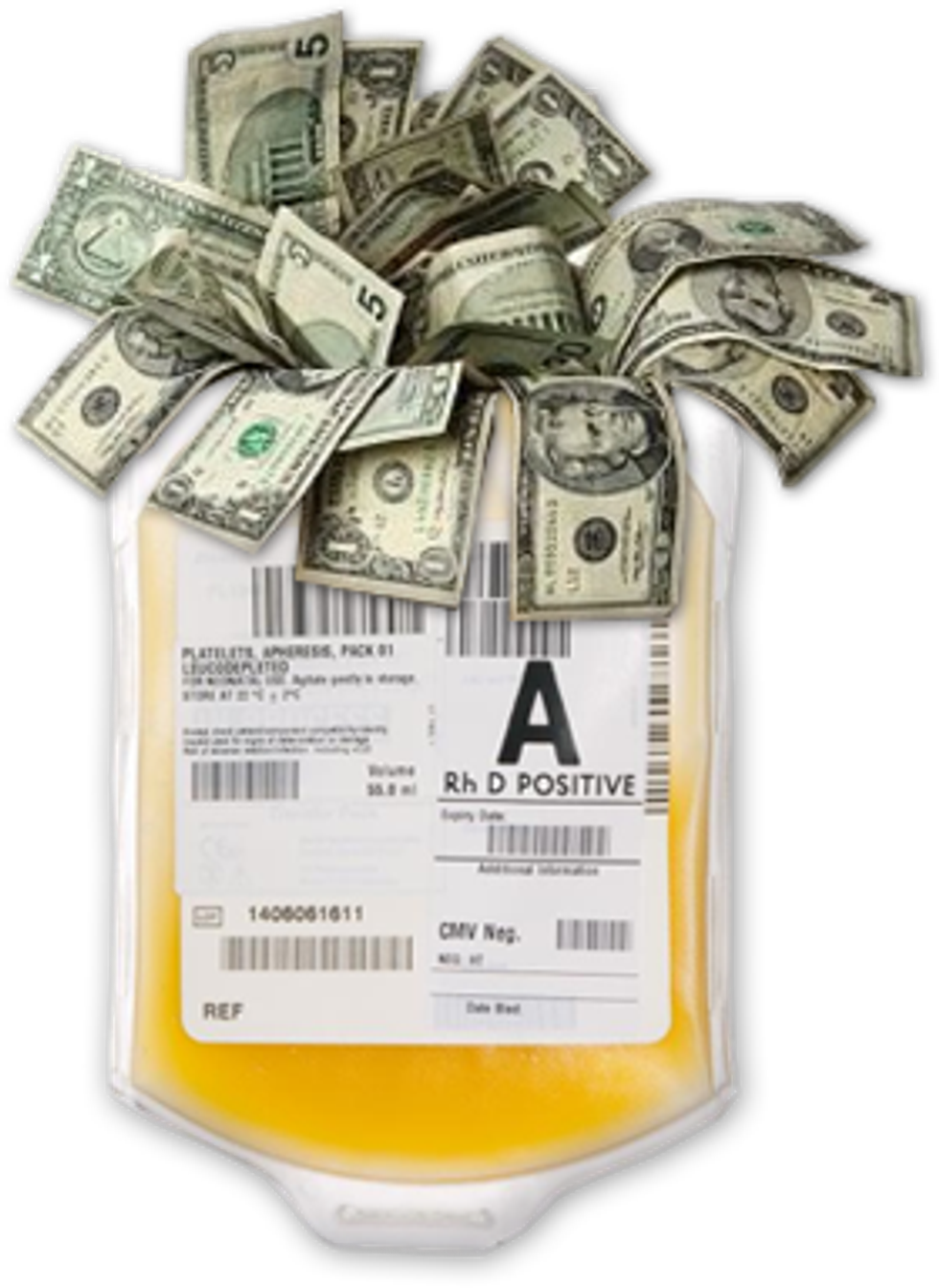Being a young adult means discovering each and every respectable possible way of acquiring and making money. You may yearn to make some money for future savings— like that pair of Adidas sneakers you have been eyeing for months, or when it comes to buying a round of shots for your buddies, or even for your next meal. No matter what the reason is, we can collectively agree that funds are a necessity and means to acquire must be met.
An interesting way to make some money has recently been brought to my attention. I personally receive a sense of accomplishment when I donate blood for American Red Cross. I feel that in this small manner I can help someone who desperately needs what I have to offer. However, donating your blood is a humanitarian act and once you donate you do not receive nor should expect compensation.
Should you be wanting of receiving compensation for donating your personal nutrients, you can look to BioLife Plasma Services in Downtown State College, or any blood plasma donation center in a town near you.
What is blood plasma?
Blood plasma is the yellowish liquid portion of your blood, combined from your red and white blood cells. It contains many nutrients, proteins, and water, which help your body work quickly towards healing infections and cease bleeding. Plasma carries salts and enzymes, which unfortunately many people lack in numbers thus putting their health in danger.
Plasma is important to your health and will be explained in Layman’s terms in this article, for a basic understanding of what you may agree to donate when you choose to be compensated by Plasma Services. Plasma is critical in treating a plethora of serious health complications. The water, salt, and enzymes blood plasma contain antibodies (immunoglobulins) that health professionals can isolate and use these vital ingredients to treats and save lives of people suffering from traumatic burns, trauma, shock, etc.
You may consider donating your blood plasma if your body is healthy and given that you are healthy post-screening process by health professionals— because it will recreate the blood cells endlessly which means you have little to lose, and much to gain. Donating your blood plasma does come with compensation, which has been quoted to be as high as $200 in various service locations. Non-commercial donation services allow people to donate blood every 28 days which is a total estimate of 13 times per year.
Now, back to my original discussion— a person in seemingly good health could make quite a bit of money for this good act.
BioLife Plasma services includes on their website ample information about tips how to prepare for donating and post-donation so that the donor can remain healthy and nutrients will not deplete. This information is highly important if you consider becoming a donor because you should never jump blindly into the trust of anyone— even health professionals.
Few people have been quoted saying they had a gratifying experience when donating blood plasma, and I frequently hear them saying that they would do it again for the cause and the great compensation. However, people have been quoted saying that there are plenty of unspecified risks associated with donating blood plasma as well.
To start on the reasoning why donating blood plasma may be a high risk instead of benefit for a person is the simple reason that many people rush to donate for financial gain. Despite a screening process, many people working for Plasma services are student employees or not completely prepared for the job which calls for careless risk. The people donating may be ill-prepared as well and the donors may be highly unfit for the act they are completing.
A donor must consider these implications that a mere careless act of unsanitized tools may be used and these risks have given blood plasma services the “Scarlet Letter” of health services.
By word of mouth, it has been quoted that even though students learning and working for health services are incompletely and unproperly trained for the act. For example, an Odyssey writer stated that her roommate worked for BioLife Plasma services and stated that they are somewhat careless and great risks took place behind the doctor doors which the patient cannot pass.
A student-intern had improperly injected the donor and caused their arm to turn green from incorrect procedure. That being said, potential donors should not necessarily be reluctant to donate, but become aware of implications and risks associated with donating and being compensated for it.
The mere fact that a donor receives compensation is what attracted me to believe that there are unspecified risks associated with the act.
A few questions that remain unanswered are; is the donor getting paid the proper amount for the act, if compensation is implied at all?; do the health service professionals optimize the utilization of plasma nutrients purely for health benefits for potential receivers?
A potential donor must not be overly excited about the compensation because little do they know if they are being paid what the blood plasma is even worth— aside from the potential risks that can come with donating. It's highly suggested that a donor do their own research about the health service facility they will be donating at and what it really means to donate your blood plasma. One should always keeping in mind two simpl, overlooked things— what’s the risk and what’s the worth?









































